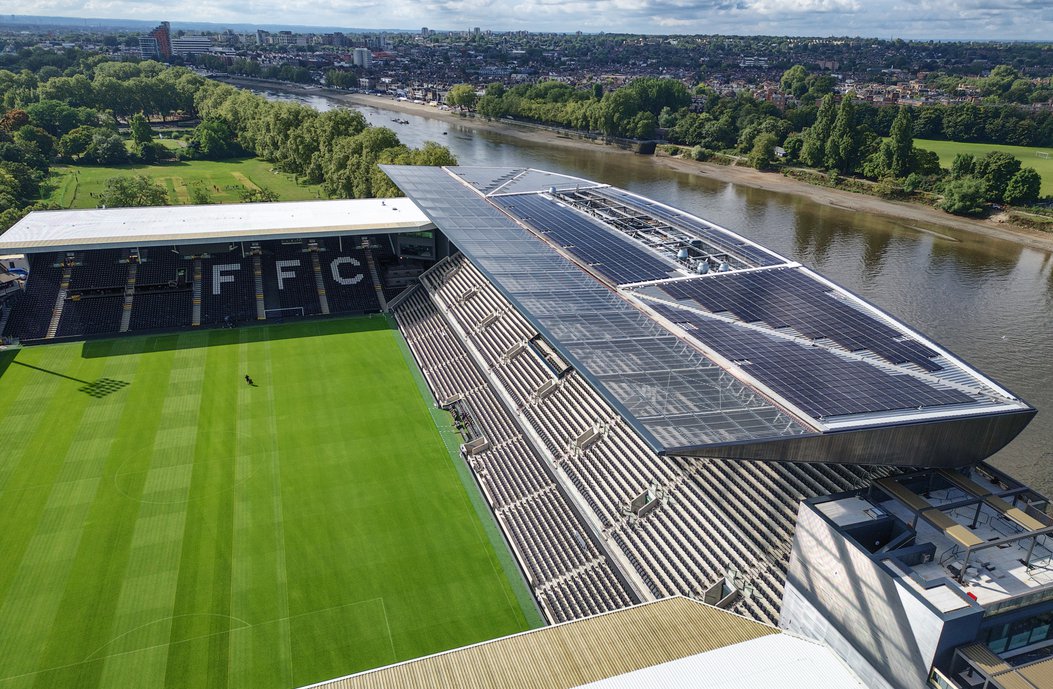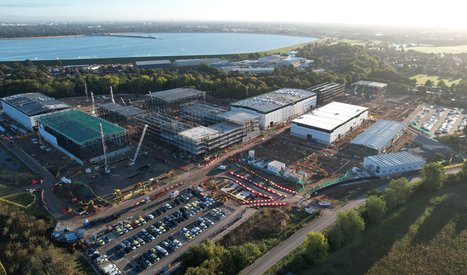The redevelopment project at Fulham FC added an additional 3,900 seats, taking the capacity of Craven Cottage to a total of 29,600 as well as enhancing local amenities.
The Groups scope included the connection design, fabrication and erection of c.2,700 tonnes of structural steelwork, delivered from both our Dalton and Lostock production facilities, together with all secondary steelwork and temporary fittings, the installation of free issue concrete terrace units, vomitories and walls.
- Location
- London
- Client
- Fulham Football Club
- Main Contractor
- Buckingham Group Contracting Ltd
- Engineer
- WSP Group Plc
- Architect
- Populous Ltd
- Tonnage
- 2,700
The two-tiered stand redevelopment aimed to not only provide first-class facilities for match-going football fans, but also benefit the local community by becoming a leisure destination in its own right, housing shops, restaurants, bars and even a health club with rooftop pool, all while blending in seamlessly with the West London surroundings with a new riverside walk.
As ever, safety was a top priority, with use of our ‘Seversafe’ edge protection throughout the construction. The project was proven to be an extreme engineering and logistical challenge, but one that Severfield’s experience and knowledge helped meet.
Construction of the Riverside stand took place whilst Craven Cottage was still in operation during the 2019/2020 football season. This, together with the sites small footprint and riverside location, made usual methods of delivering and erecting the roof trusses impossible. To solve this problem, the steelwork was pre-fabricated, assembled and fire-protected at Tilbury Docks, with the trusses delivered by barge along the River Thames and lifted into place with a 400-tonne capacity crane on a jack-up barge.
The Riverside stand incorporates a cantilever roof structure, for which steel is the traditional choice of material, but steelwork was also chosen for the main structure and tiers because of the unique logistical constraints of the site. Flanked by the pitch to the north and the River Thames to the south the project was constructed in a partly top-down sequence with steel columns springing directly from basement pile caps, allowing the steel frame construction to commence with the basement level works following afterwards.
This project had to be meticulously planned from with the utmost care and precision from the design stage onwards, with the trusses having to be designed to not only be lifted in such unusual ways while retaining strength, but to fit under London’s iconic bridges, sometimes with only one metre of clearance at low tide. This was a clear success, with the fabrication and erection proceeding without issues.



